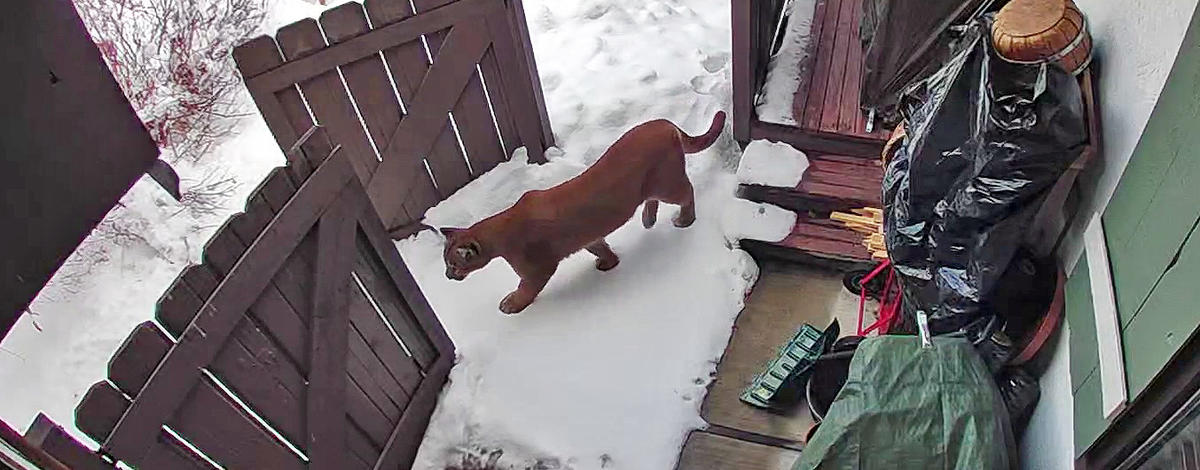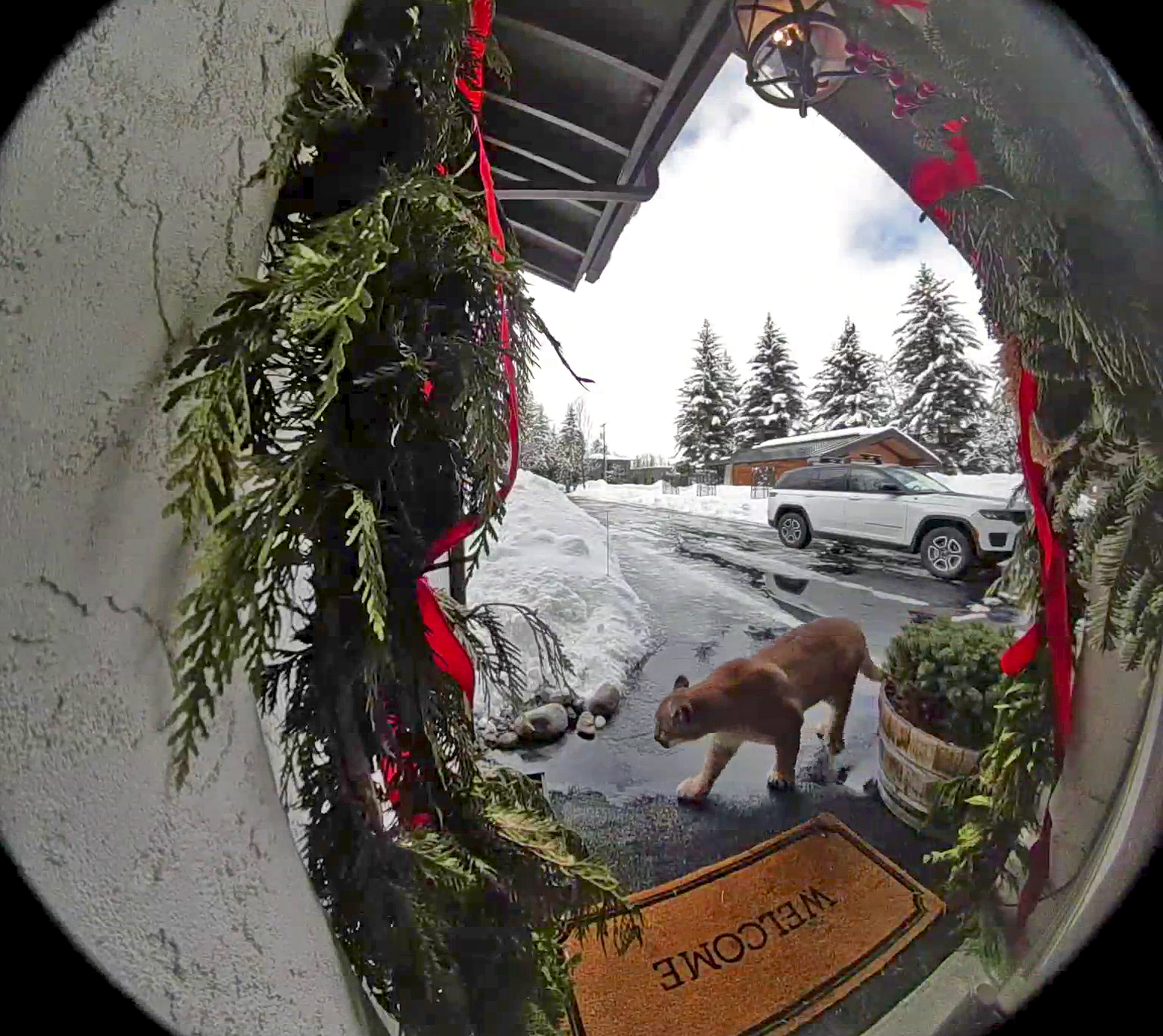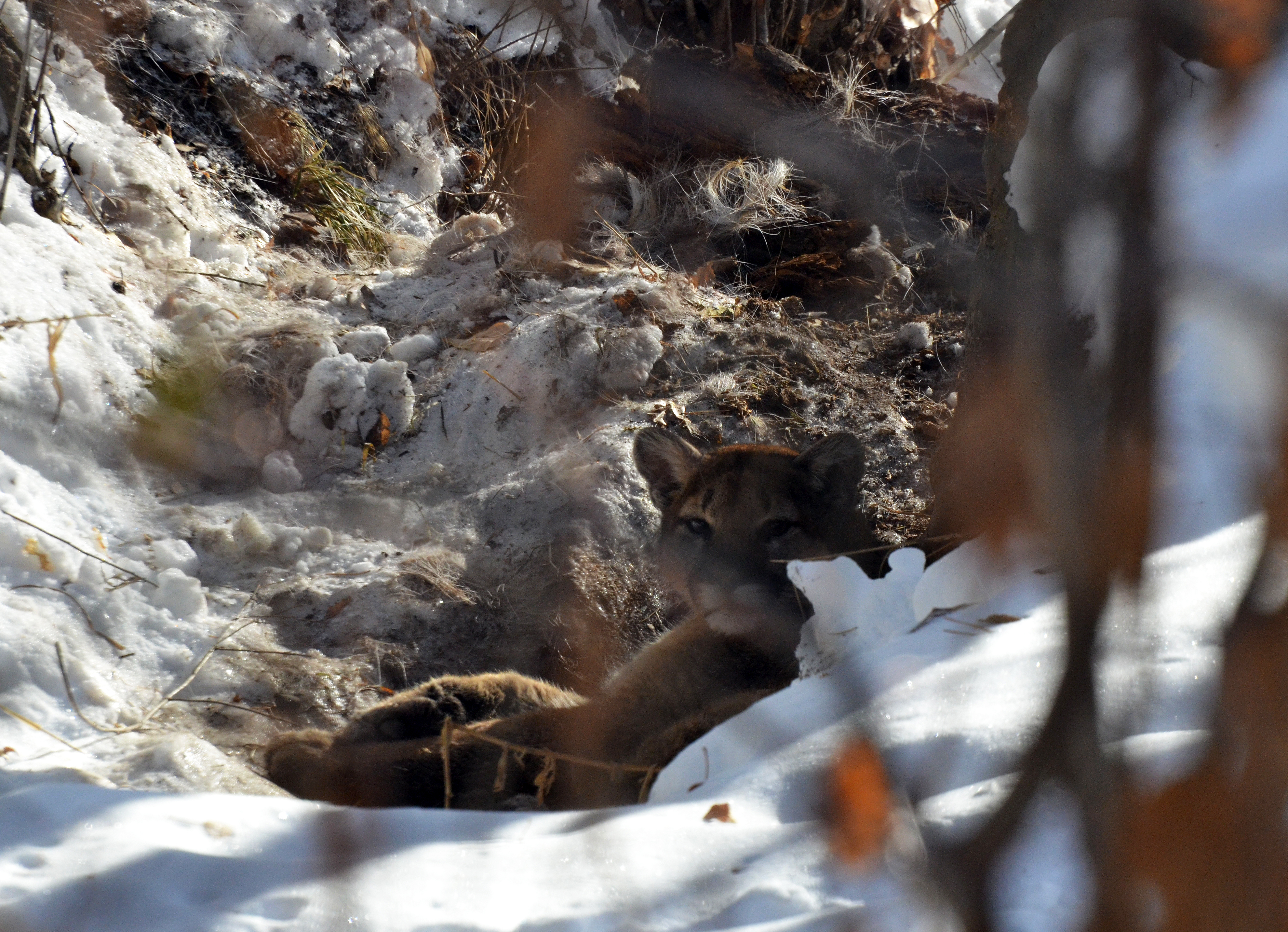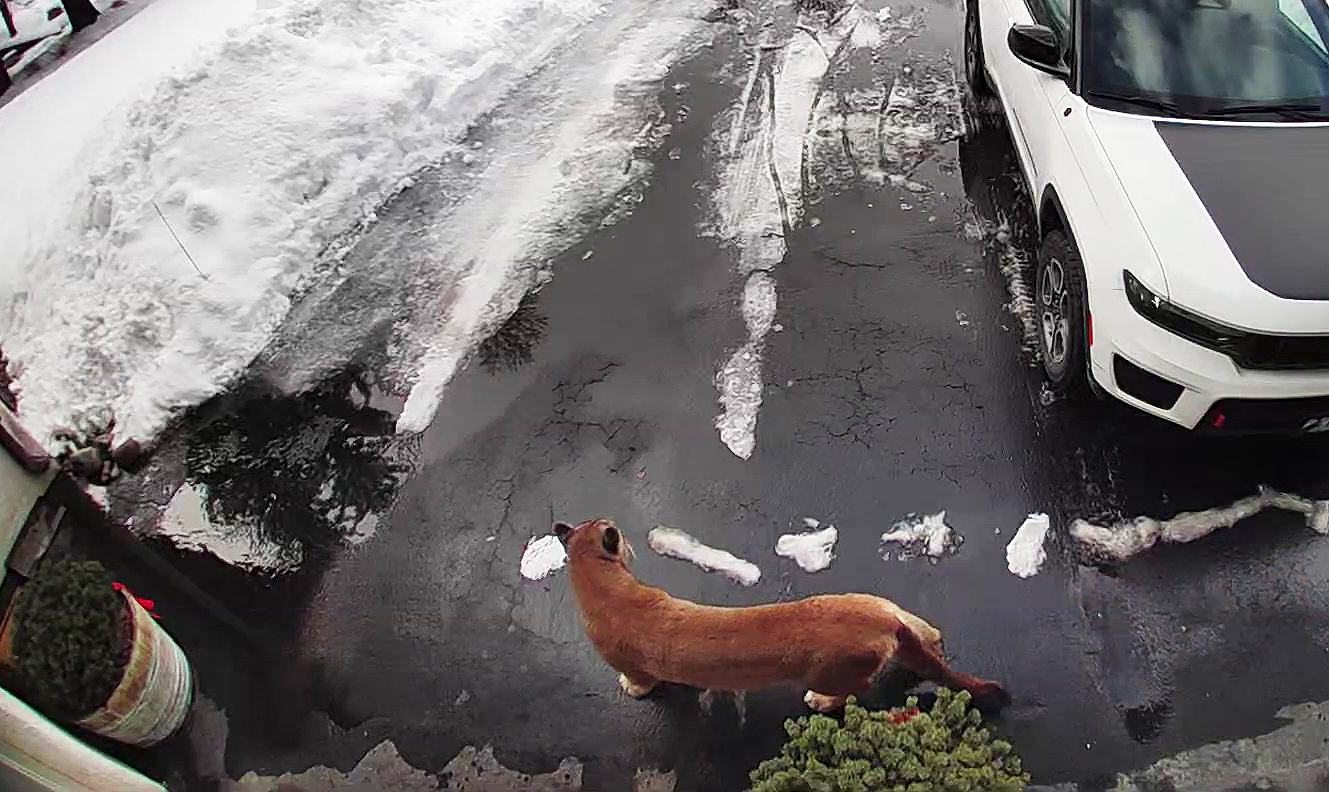Residents in Ketchum are reporting two mountain lions frequenting their yards or seeing them on their security cameras. From video observations, biologists are calling them sub-adults, approximately 1.5 to 2 years of age and suspect they are siblings. Most of these reports are from west and north Ketchum.
The lions have been seen both at night and during daylight hours.




